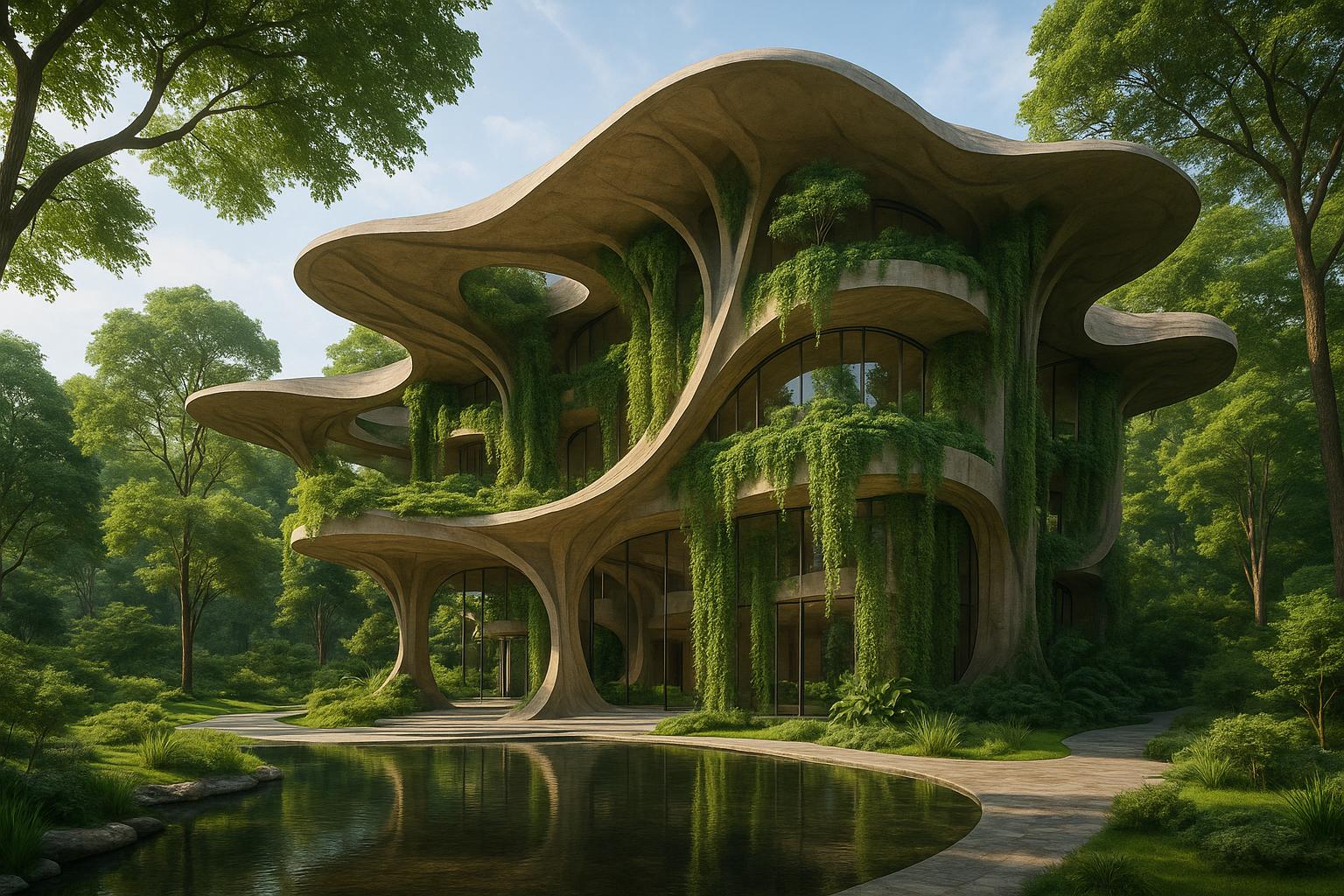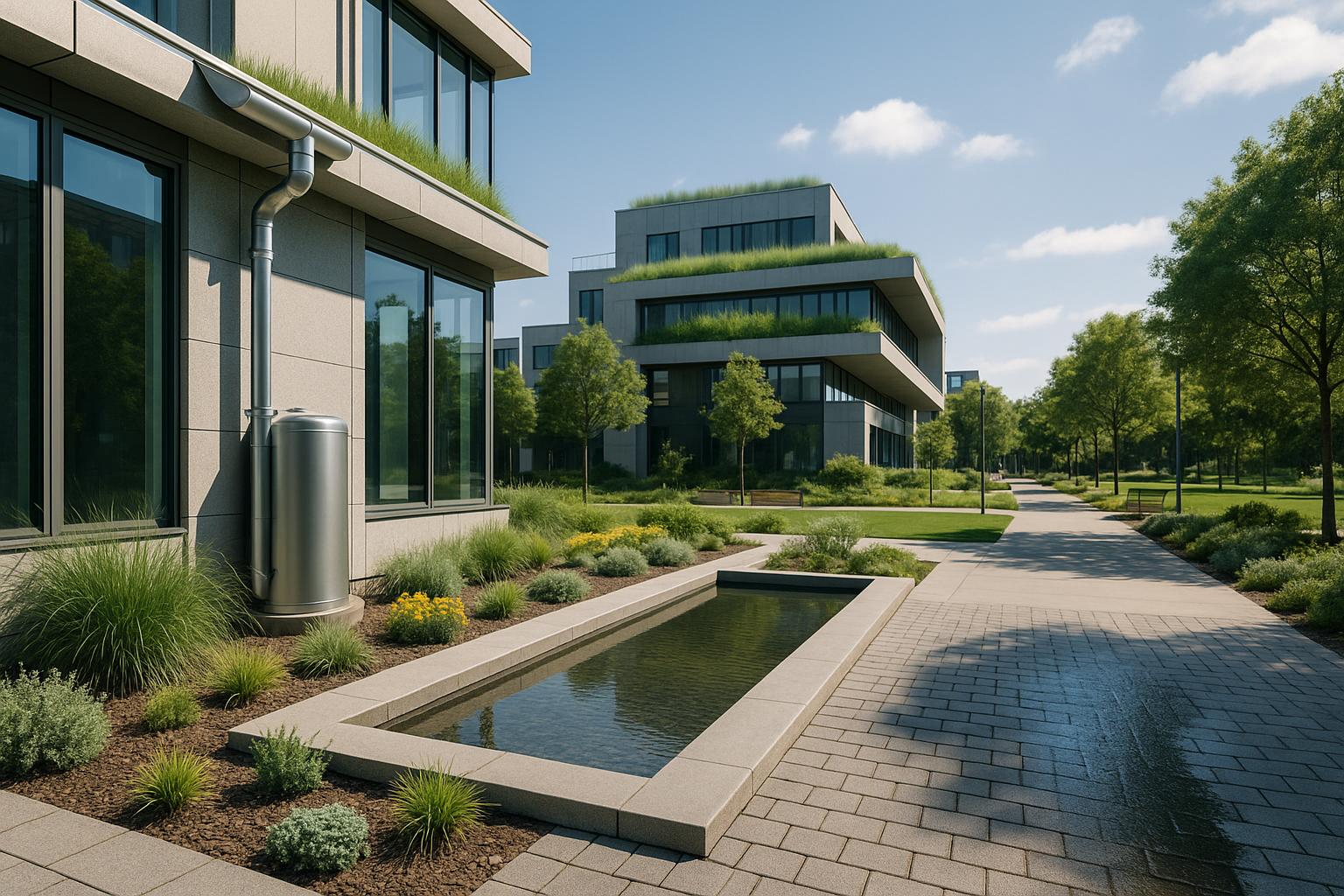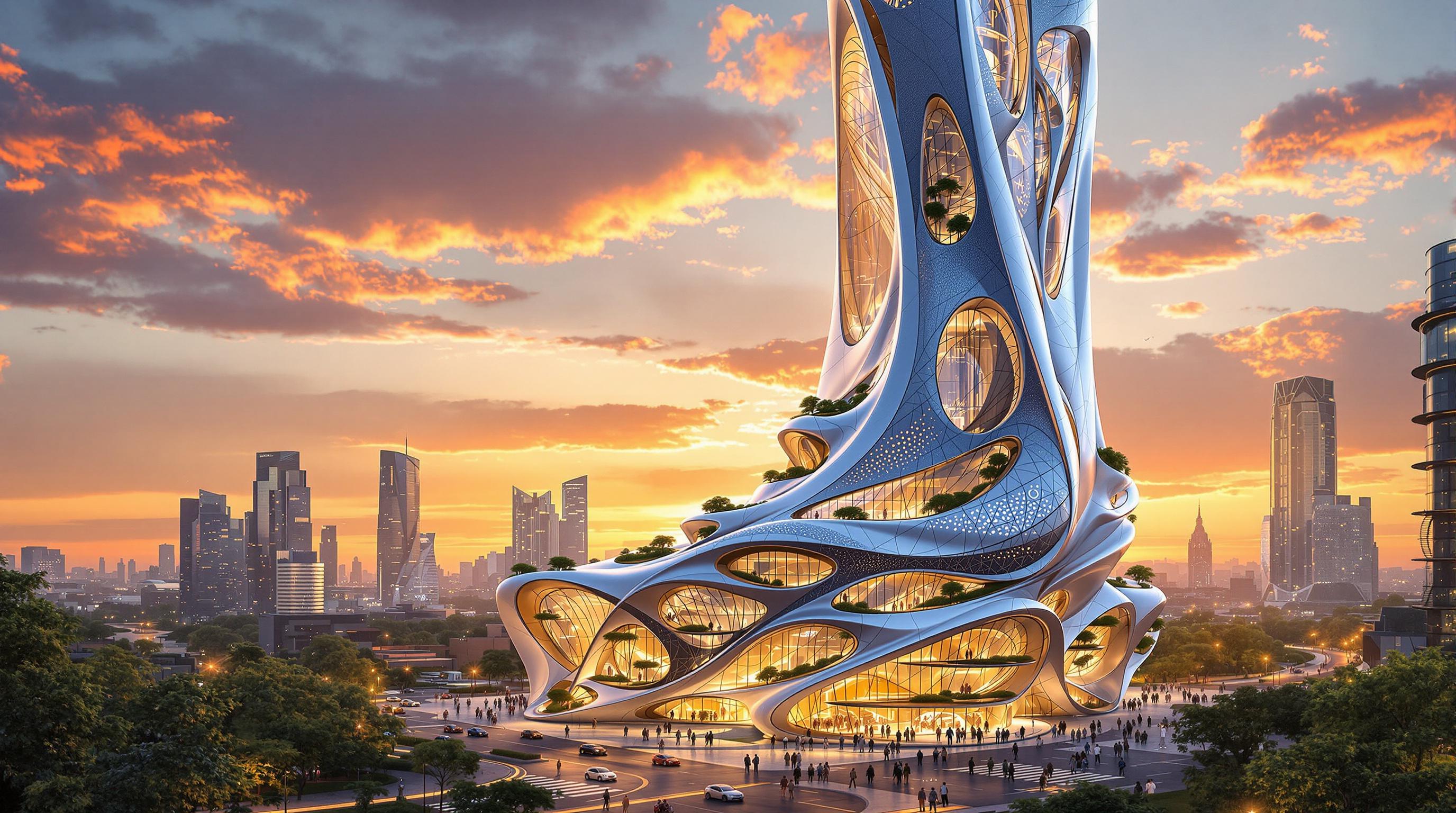Exploring the diverse world of architecture reveals how different cultures, materials, and innovations have shaped buildings throughout history. From the ancient pyramids of Egypt to the sleek skyscrapers of modern cities, each style reflects the values, dreams, and technological capabilities of its time. This primer offers a concise overview of architectural styles around the world, highlighting their unique features and historical contexts.
- Ancient Civilizations: Marvel at Egypt's enduring pyramids and Greece's perfect temples.
- Cultural Influences: Discover how climate, beliefs, and available materials influence regional styles in Asia, India, and Europe.
- Technological Advances: Learn how innovations like arches and steel frames revolutionized building designs.
- Modern and Contemporary: Explore how modern architecture emphasizes functionality, sustainability, and cutting-edge designs.
From the basic elements of architecture to a visual guide for recognizing different styles, this primer equips you with the knowledge to appreciate the rich tapestry of global architecture.
Historical Context
From the very beginning, how buildings are made has changed with culture:
- Ancient civilizations like Egypt and Greece made big stone buildings and temples that show off their skill. Big structures like the pyramids and the Parthenon are proof of their big dreams.
- In medieval Europe, huge churches with tall spires and detailed stone work showed off Christian beliefs and power. Colorful glass windows and decorations shared spiritual stories.
- The Renaissance brought back old Greek and Roman styles, with balanced designs and a focus on science and individual talent.
- Industrialization brought new materials like steel, glass, and concrete. Modernist buildings were simple and focused on function, showing a love for machines and efficiency.
Buildings reflect the changing values of societies over time.
Cultural Influences
Buildings also change based on where they are, including the climate, what people believe, and what materials are available:
- Hot, arid climates are good for buildings with thick walls, small windows, and features to keep cool, like in North Africa and the Middle East.
- Asian temples blend with nature, showing a desire for peace and harmony, with roofs designed for heavy rain.
- Indian Islamic architecture mixes styles with beautiful carvings and shapes, showing a mix of cultures.
- Igloos are made of ice and snow, perfect for people living in the Arctic, showing clever ways to build from the environment.
Architecture shows what a culture thinks is important.
Technological Capabilities
New inventions have always made new kinds of buildings possible:
- Arches, vaults, and domes let the Romans build big public spaces and things like aqueducts.
- Gothic flying buttresses helped make walls with big windows and tall towers possible.
- Steel frameworks let us build skyscrapers. Glass walls make cities feel open and full of light.
- Computational design today lets us make complex shapes, starting a new chapter in building design.
Technology shapes what we can build. Our surroundings change as we learn more about how to build things.
Looking at buildings from different times and places helps us understand people. Buildings show what societies believe, imagine, and can do. Even as styles change, the wish to make something beautiful stays the same.
Architectural Styles of the Ancient World
The ancient world was full of amazing building skills and design ideas that we still look up to today. Think about the huge pyramids in Egypt or the beautiful Greek temples. These old buildings tell us a lot about what people back then valued and could do.
Egypt
In Ancient Egypt, buildings were meant to last forever and look impressive. This is why we have those massive stone pyramids.
- The pyramids were built with huge stone blocks cut very precisely. They were made to remember the pharaohs and have lasted for thousands of years.
- Temples for the gods had big halls with lots of tall columns and walls full of pictures and writings.
Greece
Greek buildings were all about beauty and perfect shapes.
- They had rules for making everything look just right. The Parthenon is a great example of this.
- Greek temples were simple but balanced, with columns holding up the roof.
- They used math to make everything look good, like the Parthenon's gentle curves.
Rome
Romans were great at coming up with new ways to build, like using arches, domes, and concrete.
- Big places like the Pantheon and Colosseum show off what they could do with arches and concrete.
- They also built aqueducts, bridges, and roads that were really well made.
- Their buildings mixed Greek design with new tricks, like the Pantheon's dome on top of a columned entrance.
The buildings from the ancient world were amazing for their time and still inspire us. They show us how Egypt, Greece, and Rome valued beauty, beliefs, and what they could achieve with their building skills.
Architectural Styles by Region
Different parts of the world have their own unique styles of buildings. When we look at buildings in Asia, India, and Europe, we can see how the style of architecture changes from one place to another. The style of a building often depends on the local weather, what people believe in, the culture, and what building materials are available.
Asia
In Asia, a lot of buildings are made with wood and have roofs that slope gently. This design works well with the rainy season there.
- Pagodas in China and Japan have roofs that stack up. They're designed to make rainwater flow down easily.
- Asian buildings often aim for a simple look that blends in with nature. You'll see gardens, ponds, and designs of nature a lot.
- Palaces and temples are colorful and have decorations like animals and plants. These decorations are about beliefs in balance and spirituality.
India
Indian architecture is a mix of Islamic, Hindu influences, and the styles of various rulers. The buildings often have deep spiritual meanings.
- Hindu temples have tall, detailed towers and carvings of gods. Domes in these buildings are about spiritual ideas.
- Mosques introduced arched entrances and shapes based on geometry. The Taj Mahal is a mix of Islamic design and floral patterns.
- The red forts and palaces made with sandstone and marble have detailed carvings to show power.
Buildings in India blend different cultural designs with spiritual meanings.
Europe
In Europe, building styles have changed a lot over time. Churches were very important and showed off building skills.
- Gothic cathedrals were tall, with spires and lots of decorations. They were a way to show Christian beliefs.
- The Renaissance liked perfect shapes and rules. Fancy columns and domes showed off skill.
- Baroque and Rococo styles had big, curved shapes and lots of gold details.
- Modern buildings use new materials like steel and glass for simple, useful designs.
Europe has made many famous buildings by trying out new styles over the years.
Comparative Table of Regional Variations
| Region | Materials | Structural Forms | Ornamentation |
|---|---|---|---|
| Asia | Wood, paper | Pagodas, palaces | Natural shapes, dragons |
| India | Stone, marble | Arches, domes, minarets | Geometric patterns, flower motifs |
| Europe | Brick, stone | Arches, spires, columns | Sculptures, frescoes, relief carvings |
Looking at buildings around the world shows us how architecture changes to fit local cultures and environments. This makes the variety of styles across the globe a great story of human creativity.
Modern and Contemporary Architecture
Modern architecture started in the early 1900s when architects wanted to try something new. They used different materials and ways of building to create a fresh look. This new style was all about making buildings that were simple and useful, leaving behind fancy decorations.
Key Features
- Putting the building's use first, without extra decoration
- Using new materials like concrete, glass, and steel
- Keeping shapes simple and clean
- Having open spaces inside that can change as needed
- Showing off how the building is made and what it's made of
Influential Styles
A few styles from the early 1900s helped shape modern architecture:
Art Deco is known for its sleek look and fancy materials. Buildings often look tall and show off sharp shapes and patterns.
Bauhaus believed in making things that are simple but work well, combining art, craftsmanship, and technology. Their buildings are straightforward, showing the bones of the structure.
Futurism was all about bold and new ideas for buildings. It used new shapes, materials, and ways of building.
Sustainable Architecture
Nowadays, architects try to make buildings that are good for the planet. They focus on using less energy and resources:
- Passive solar design means setting up a building to use less energy by taking advantage of sunlight, good insulation, and smart window placement.
- Renewable energy includes things like solar panels and wind turbines to power buildings without harming the environment.
- Adaptive reuse is about changing old buildings for new uses instead of tearing them down.
- Local materials mean using stuff from nearby to build, which saves on transportation and fits the local weather better.
Today's architects also use computers to design complex shapes and structures. Architecture keeps changing as we find new ways to design and build.
sbb-itb-1be9014
Architectural Elements and Building Parts
Architecture uses certain common elements and parts in buildings across styles. Understanding these features helps us read buildings from different eras and places.
Columns
Columns are upright pillars that hold up parts of buildings. They come in different shapes:
- Doric columns are plain and sturdy without a base.
- Ionic columns are thinner with scroll shapes at the top.
- Corinthian columns have fancy tops decorated like leaves.
- Engaged columns are attached to walls for support and design.
Columns changed in look over time but kept the job of holding things up.
Moldings and Cornices
Moldings are strips along floors, walls, and ceilings that divide spaces or make pretty patterns. Cornices are moldings at the top of walls inside and out.
- Crown moldings run along the joint between walls and ceilings.
- Chair rails are midway up walls in fancier rooms.
- Baseboards finish off the bottom of walls meeting the floor.
These details frame spaces and show off fine craftwork in buildings.
Windows and Doors
Windows and doors are decorated in various styles. Special parts frame, protect, and bring light through these openings.
- Fancy pediments, moldings, and carvings often top windows and doors.
- Shutters and transoms flank and top windows for light control and decoration.
- Strong lintels bridge over openings while arches form curved structural openings.
These functional parts became design details over time.
Roofs and Arches
Roofs and arches show changes in shapes and abilities over architectural history.
- Vaults are arched ceilings while domes cover circular spaces.
- Gables form pitched roofs while gambrel roofs have dual slopes.
- Unique shapes like flying buttresses prop up soaring Gothic cathedrals.
New materials and math let architects make amazing new roof forms.
These are just a few of the common parts that make up building design across places and eras. Looking closely at details like these help us appreciate the thought and skill built into architecture's history.
A Visual Guide to Recognizing Styles
Understanding different types of architecture is easier when we can look at pictures and compare them. Seeing photos, drawings, and the main features side by side helps us spot the differences in building designs from different times.
Photo Journey Through Styles
Looking at pictures of buildings helps us get a feel for each style:
Romanesque: Simple curved arches, thick walls, small windows

Gothic: Sharp arches, tall towers, fancy carvings

Baroque: Fancy details, curves, big sizes

Modern: Simple shapes, glass walls, visible structure
Seeing actual buildings helps us understand what each style focuses on.
Comparing Key Features
We can also look at how styles are different by comparing them directly:
| Style | Arches | Windows | Ornamentation | Overall Look |
|---|---|---|---|---|
| Romanesque | Rounded | Small, plain | Some sculptures | Thick walls give a solid look |
| Gothic | Pointed | Big stained glass | Lots of details | Tall and reaching up |
| Baroque | Rounded | Big, with decorations | Gold, paintings, statues | Big and curvy |
| Modern | Often none | Big glass panels | Very little | Simple and clean shapes |
Putting styles next to each other shows what makes each one special.
Style Sketches
Looking at simple drawings of key features also helps:
Romanesque
Gothic
Seeing the difference between the solid Romanesque walls and the tall Gothic towers helps us remember each style.
By matching pictures, comparing features, and looking at drawings, we link what we see with what we know. This makes it easier to recognize different architecture styles, like spotting Romanesque arches or Baroque curves, in buildings all around us.
Conclusion
Architecture changes with time and place, showing what people think is important, what they believe, and what they can do. By looking at old and new buildings, we learn how these ideas and skills have changed.
Here's what we've learned:
- Long ago, people built amazing things like the big pyramids in Egypt and the pretty Greek temples. These old buildings show us how people back then cared about making things look good and last long.
- In Asia, the wooden pagodas, in India, the detailed temples, and in Europe, the big churches show how building styles change to match the weather, what people believe, and what they can build with.
- New ways to build, like arches, special supports, and steel frames, let builders make even bigger and cooler buildings.
- Over time, building styles kept changing. From the tall Gothic churches to the fancy Baroque buildings to the simple and useful modern buildings.
- Today, we care a lot about making buildings that don't hurt the planet and use new technology to design interesting shapes.
Even as things change, people always want to make beautiful buildings. Learning about architecture from all over the world shows us how smart and creative people can be. From the ancient builders in Rome to today's architects making cities of the future, everyone wants to make spaces that are good to look at and live in. By understanding buildings, we get to know the stories of people from long ago and today.
Related Questions
What are the 4 types of architecture?
There are four main kinds of architecture:
- Residential architecture: This is all about designing homes and places where people live.
- Commercial architecture: This focuses on creating spaces for businesses like shops, offices, and restaurants.
- Landscape architecture: This involves designing outdoor areas like parks and gardens that everyone can enjoy.
- Urban design architecture: This is about planning and designing the bigger picture of cities and neighborhoods, including streets and buildings.
There are also other kinds like designing factories, focusing on the inside of buildings, and making buildings that are good for the environment.
What is architecture style international style?
The International Style is a big deal in modern architecture from the 20th century. It's known for:
- Simple shapes and lines
- No fancy decorations
- Using modern materials like steel, glass, and concrete
- Open spaces inside and lots of light
- Caring more about how useful a building is than how it looks
This style started in Europe and has influenced many tall buildings and offices all over the world.
What are the common architectural styles?
Some well-known architectural styles are:
- Classical (Greek, Roman): Balanced, with columns and triangle tops
- Gothic: Tall arches, supports on the outside, and towers
- Baroque: Lots of details, curves, and big designs
- Neoclassical: Neat and orderly, with columns and a classical look
- Victorian: Pointy roofs, towers, and lots of decoration
- Modern: Simple shapes, using glass, steel, and concrete
These styles show the trends and what was possible at different times.
What architecture style is similar to Brutalism?
Brutalism is kind of like an older style called the International Style because both:
- Show off concrete
- Have simple, boxy shapes
- Don't have decorations
- Let you see the structure from outside
- Focus on the building's use more than its look
Both styles prefer a straightforward, practical look over a fancy one.



